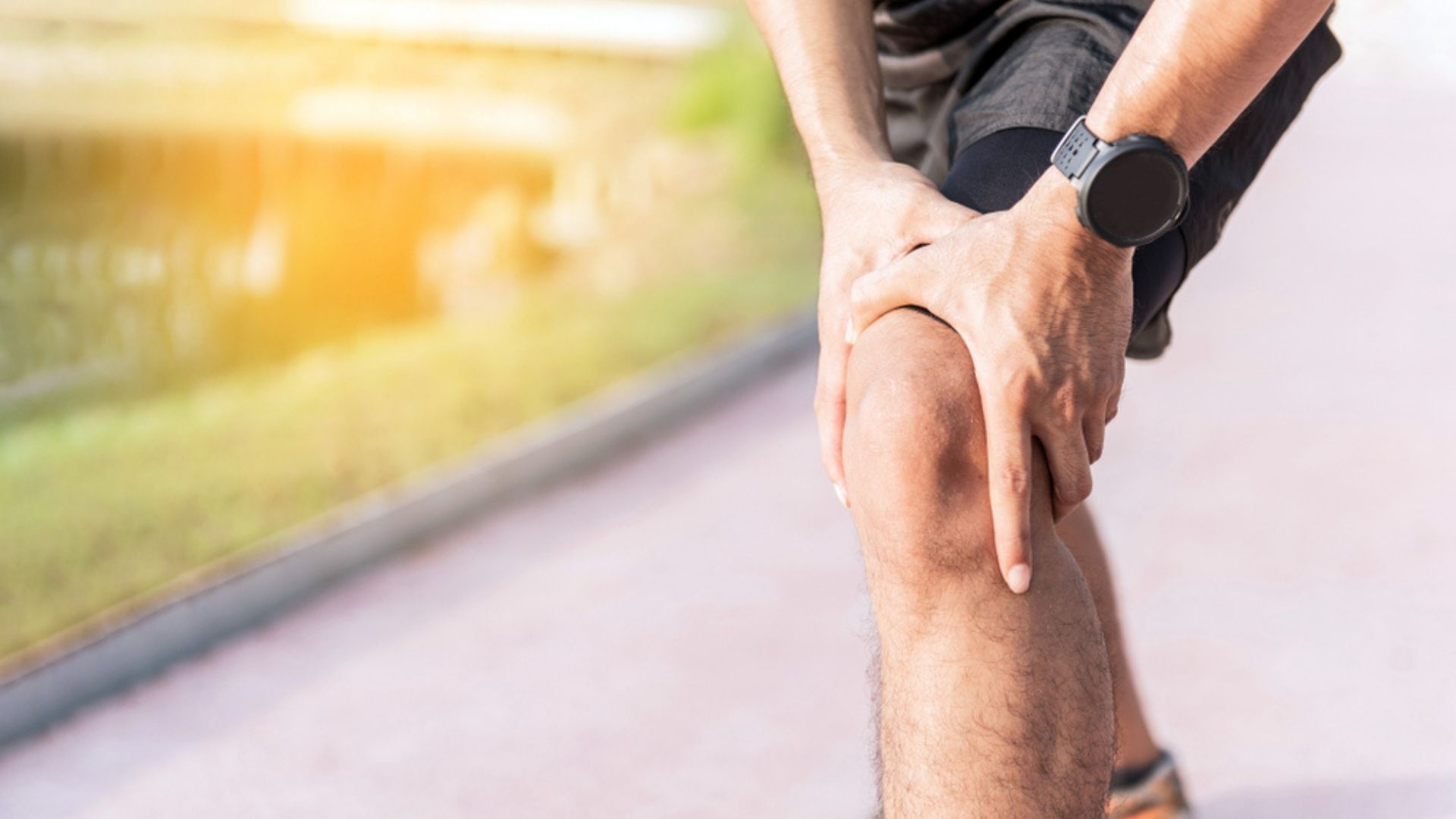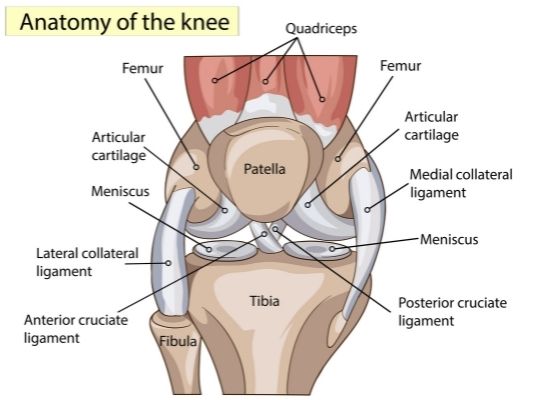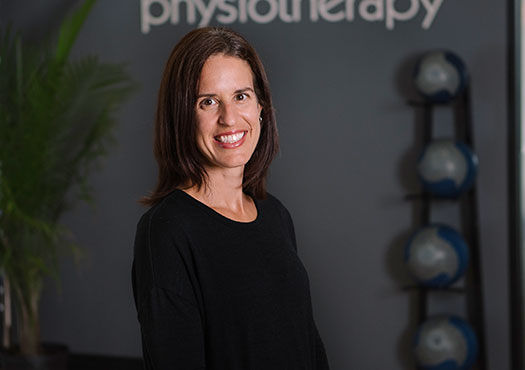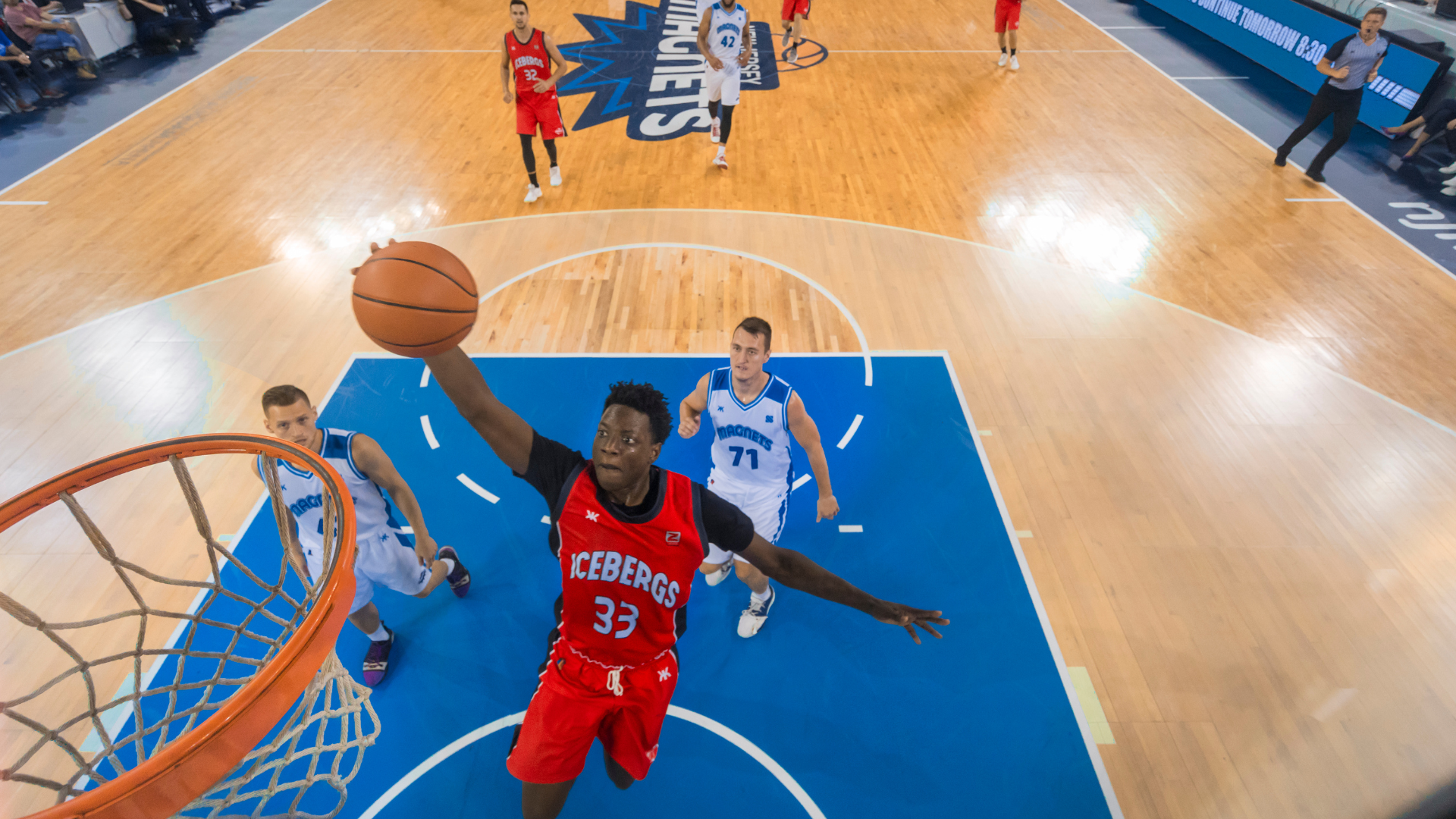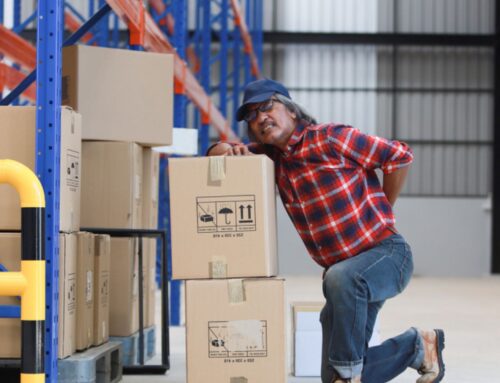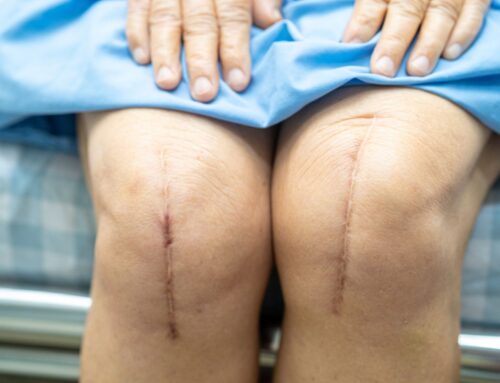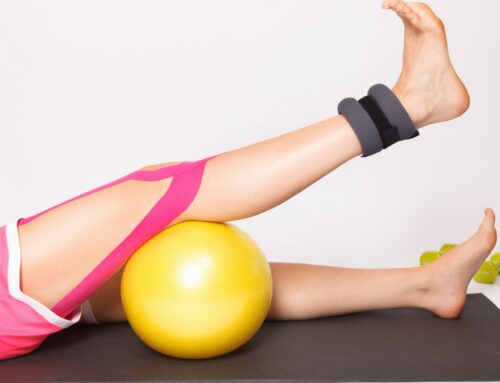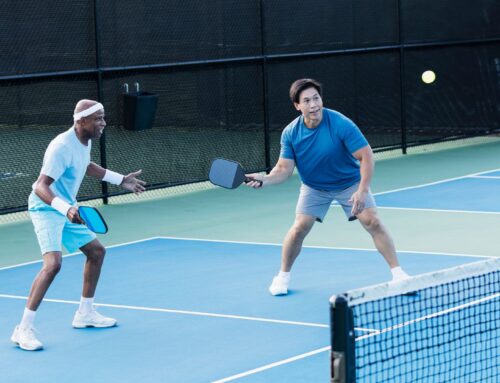While the overall incidence of ACL tears is low, the ACL is the most commonly injured ligament of the knee.[i] Proper diagnosis is crucial in the treatment of ACL injuries. ACL rehabilitation is often seen as the first line of treatment independent of the severity of injury.
Therapy is important whether preparing or recovering from surgery, or with conservative management. A research review found that long term supervised rehabilitation programs resulted in more favorable outcomes (knee strength, joint stability, pain) in patients after ACL reconstruction.[ii] In this article, we will look at how ACL injuries occur and how treatment and ACL rehabilitation are paramount to successful outcomes.
What is the ACL?
The ACL is a dense band of connective tissue that attaches the femur (thigh bone) to the tibia (lower leg bone). The way this ligament is attached is important to understand why and how it is commonly injured.
The ACL connects the thigh bone to the shin bone through a complex diagonal route through the knee. It is one of the four major ligaments of the knee.
The ACL contributes largely to the stability and mechanics of the knee joint. It acts to prevent the tibia from sliding forward on the femur, while also resisting rotational forces at the knee.
How Do ACL Injuries Occur?
ACL injuries can be categorized into 3 groups: direct contact, indirect contact and non-contact:
- Non-contact injuries are the most common mechanism of ACL injury.[iii] A cut and plant motion of the foot is the typical mechanism resulting in this type of tear (non-contact). This mechanism of injury involves planting the affected leg to cut and change direction. Non-contact injuries can also occur when landing from a jump, pivoting or twisting.
- Indirect contact injuries occur when a person or object strikes a part of the body other than the knee itself, causing excessive forces to be transferred through the knee.[iv]
- With direct contact injuries there is a direct blow to the knee usually from a lateral or anterior direction.[v]
ACL Injury Treatment
With this type of injury pain is immediate. It is often accompanied by swelling, and potentially decreased ability to weight bear on the affected leg. Initial treatment includes resting and icing the affected area to minimize swelling and decrease pain. Compression, with an elastic bandage and elevating the affected area will also help with symptom management.
ACL Rehabilitation
A physical examination can identify an ACL injury as well as any accompanying injuries (ie. meniscus, other ligaments). History taking and tests looking at the integrity of the ligaments and surrounding structures will help to determine an ACL injury. Further imaging such as an ultrasound or MRI may be used to rule out other causes or determine the extent of the injury.
ACL strains are categorized into three grades:
Grade 1 – the fibers of the ligament are stretched but not torn; there is mild swelling or tenderness, the joint remains stable
Grade 2 – the fibers of the ligament are partially torn, there is moderate swelling and tenderness with the joint potentially feeling unstable
Grade 3 – complete rupture of the ligament; tenderness, swelling and pain may be present with clear instability of the joint (there is a giving out of the knee)
The physiotherapist will communicate with the specialist or surgeon to determine what course of treatment is best for you.
What is the Goal of ACL Rehabilitation?
Depending on the extent of the tear, as well as any other injured areas, physiotherapy plays a key role at all levels of the rehabilitation process. In addition, non-operative management is considered as the first line treatment after ACL tears. Physiotherapy management is comprehensive and includes:
- Swelling and pain management
- Regaining full range of motion of the knee joint
- Strength training of muscles contributing to knee joint stability
- Balance training/proprioception exercises
- Return to sport training
- Assess and prescribe a knee brace
What Type of Exercise is Good for a Torn ACL?
Depending on the severity and acuteness of injury different types of exercises are appropriate for ACL tears. Exercises that help to strengthen all of the muscles around the knee joint will ensure greater stability and function in the long term.
With full ACL tears it is important to avoid exercises that strain the ligament and potentially lead to further damage. If awaiting surgery and for a number of weeks after surgery, it is best to avoid open chain knee extension exercise. In these exercises the segment furthest away from the body is free and not fixed to an object. These types of exercises place increased stress and force on an already ruptured or newly operated on ligament.
How to Strengthen Your ACL
ACL strengthening should involve all the muscles that surround and support the knee joint.
Depending on the severity of the injury and stage of recovery, these exercises can vary from performing exercises in a lying position to performing sport specific exercises. Exercises will also vary from isometric (muscle is activated without joint movement) to doing exercises with resistance.
Ways to Prevent ACL Injury
Compelling evidence suggests that physiotherapy interventions demonstrate the ability to prevent future injuries from occurring.[vi] ACL injury prevention strategies include:
- Implementing targeted strength training
- Ensuring proper warm up
- Practicing proper technique of exercise and sport
- Wearing proper footwear
- Ensuring a balance between strength and flexibility into your exercise routine
- Adding balance training to your routine
Physiotherapists work with people who have been injured as a result of falls, motor vehicle collisions, sports injuries and work-related injuries providing customized rehabilitation programs and injury prevention strategies. Talk to us about a customized ACL injury prevention program today.
References
[i] Evans J, Nielson Jl. Anterior Cruciate Ligament Knee Injuries. [Updated 2021 Feb 19]. In: StatPearls [Internet]. Treasure Island (FL): StatPearls Publishing; 2021 Jan-.
[ii] Walker, A., Hing, W. & Lorimer, A. The Influence, Barriers to and Facilitators of Anterior Cruciate Ligament Rehabilitation Adherence and Participation: a Scoping Review. Sports Med – Open 6, 32 (2020).
[iii] Atkinson Smith M., Smith W. T., Kosko P., Anterior Cruciate Ligament Tears Reconstruction and Rehabilitation, Orthopaedic Nursing, January/February 2014, Volume 33, Number 1, National Association of Orthopaedic Nurses.
[iv] Raines BT, Naclerio E, Sherman SL. Management of Anterior Cruciate Ligament Injury: What’s In and What’s Out?. Indian J Orthop. 2017;51(5):563-575. doi:10.4103/ortho.IJOrtho_245_17
[v] Ibid.
[vi] Maher, C. (2000). A systematic review of workplace interventions to prevent low back pain. Australian Journal of Physiotherapy, 46: 259-269
Written by

